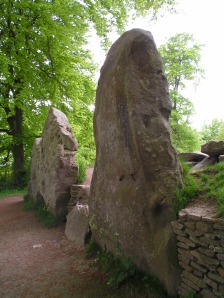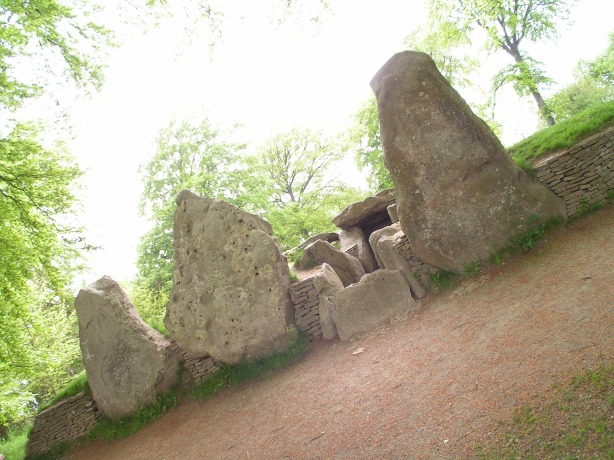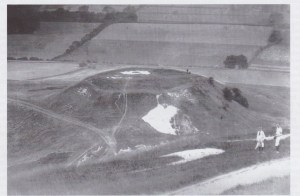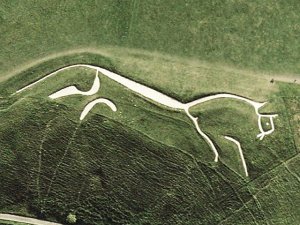Re-posted from Archaeodeath
A Tasty Sub
In a previous post, I reported on my attendance and the rich range of papers presented at the Subterranean in the Medieval World conference this weekend. From hell-mouths to cross-shafts, from dragons to canals, bed-burials to catacombs, all manner of related and evolving underworlds known from medieval texts, maps, manuscripts, material cultures and landscapes were explored in a session superbly organised by art historians Meg Boulton and Heidi Stoner. A successful conference and there was a super interdisciplinary dialogue between delegates and speakers. I forgot that I was one of only a handful of archaeologists there and felt very at home with the debates and evidence; everyone was so welcoming and the themes fascinating and engaging. I was lucky enough to be the keynote talk.
The Keynote
In the previous post, I outlined the introduction to my keynote, and some of the approaches I think we need to develop in thinking about the medieval subterranean. Here I want to sketch some of the preliminary ideas I used to apply this approach to a case study: the Archaeology of Weland the Smith, focusing on one of the case studies in my ongoing ‘Past in its Place’ project: Wayland’s Smithy (Oxfordshire, formerly Berkshire).

Weland the Smith on the Franks Casket (Wikimedia Commons)
Weland in the Later Anglo-Saxon Imagination
There is evidence that the story of Weland the Smith – best known from the Lay of Volundr – a 13th-century Icelandic poem – was known in pre-Viking England. The irrefutable evidence for this is a whalebone casket dated to the early eighth century: the Franks’ Casket. On the casket, the captive and hamstrung artisan is depicted in his smithy killing the king’s sons (one headless corpse apepars beneath his feet) and presenting a vessel, presumably made from the skull of one of the sons to the king’s daughter. Wayland is an infamous murderer and rapist. He exacts revenge using these modes of violence on the king who had imprisoned him. He then escapes in a flying machine made of swan’s wings. In this image, the king’s daughter is accompanied by another woman while there is a ?boy (or Egil, Wayland’s brother) to the right capturing swans.
Weland also appears in late Anglo-Saxon literature. Beowulf has a mailshirt made by Weland. When Alfred the Great translated Fabricius as Weland from Boethius’s Consolidation of Philosophy. Alfred showed a knowledge of the famed elven smith but also a strong sense that, for a Christian king, it is apposite that he is not located:
“Where are now the bones of that wise and famous goldsmith Weland? … Where are the bones of Weland now, and who knows now where they may be?”
Wayland’s Smithy
Amidst the many supernatural toponyms known from later Anglo-Saxon sources and recently exhaustively appraised by Sarah Semple in her superb book Perceptions of the Prehistoric Past in Anglo-Saxon England, there is one that has fascinated Anglo-Saxonists since the nineteenth century; the attribution to a Neolithic tomb as ‘Wayland’s Smithy’.
In the charter bounds for Compton Beauchamp in AD 955 it says: “‘along the furrow until it comes to the wide gate east of Wayland’s Smithy (Yelandes Smiððan”). This name is preserved in later sources as referring to a Neolithic chambered tomb of the Cotswold-Severn tradition, a monument that saw excavation in 1921 and then in the early 1960s and dates to the 36th and 35th centuries BC.
By focusing on thinking further about why this specific monument, in that specific location, received the place-name association with Wayland, and why more specifically still, it was referred to as his ‘smithy’ (not his tomb or anything else), I hoped to discuss how we can be more specific in thinking about the particular choices made in allocating myths and legends to ancient monuments in the later Anglo-Saxon landscape.

The reconstructed facade at Wayland’s Smithy – the monument would not have looked like this in the Early Middle Ages when some of these stones may have already toppled.
The Materiality of Wayland’s Smithy
I proposed that Wayland’s Smithy can be better understood by scrutinising its distinctive form and materiality. It was not simply a stone monument, but one that may have been overtly megalithic, strikingly unique for the vicinity. I reviewed the archaeology and noted a range of other potential discoveries – stone, bone and metal that, if similar had been found in the Early Middle Ages, might have prompted an association with Wayland’s Smithy. I suggested that, in the Anglo-Saxon mind, stone and bone were as associated with Weland as metalworking.
The Landscape Context of Wayland’s Smithy
I then looked at the landscape of Wayland’s Smithy, suggesting that its significance as a landmark may have derived from its association outside a ‘gate’ on the Ridgeway that allowed access to an ancient historic route and one used by Anglo-Saxon and Viking armies in the ninth, tenth and eleventh centuries. I suggested that Wayland’s Smithy became peripheral to a complex monumental landscape focusing on the striking topogrpahy of Dragon Hill and the Manger to the east. Including multiple Iron Age hillforts and the famous White Horse, this was a landscape of myth and memory and Wayland’s Smithy was at its edge. The prominence yet peripheral character of this monument may have made it a locale of local, regional and supraregional importance and fame in the later Anglo-Saxon period.
Weland’s Bones and the Bones of Weland
I have not published on these issues, so I haven’t given all the details of my arguments here. Still, I hope this is enough to whet your appetite for more forthcoming research from the Past in its Place project. My argument is that Wayland’s Smithy was another ambivalent ancient monument in the later Anglo-Saxon landscape, one that became associated with the elven smith because it was on the edge of a monumental complex, and perhaps also because it was a place where the Anglo-Saxons had discovered, not the discrete burials they would have expected from a funerary monument, and not the tomb of Weland, but the results of his craft.
By this I do not refer to the discovery of Anglo-Saxon burials, and perhaps not only metal deposited there in the Iron Age, but the stones and bones which may have been associated with Weland and the making of his grisly treasures…



